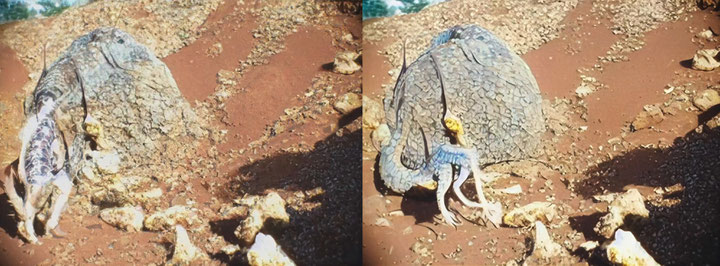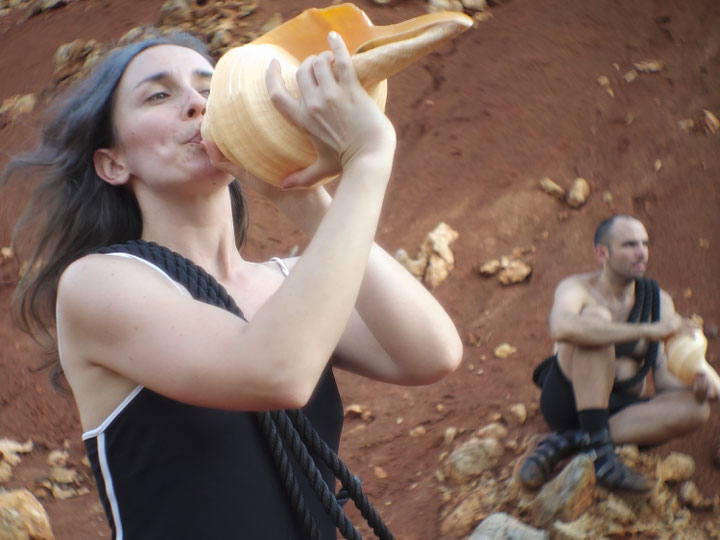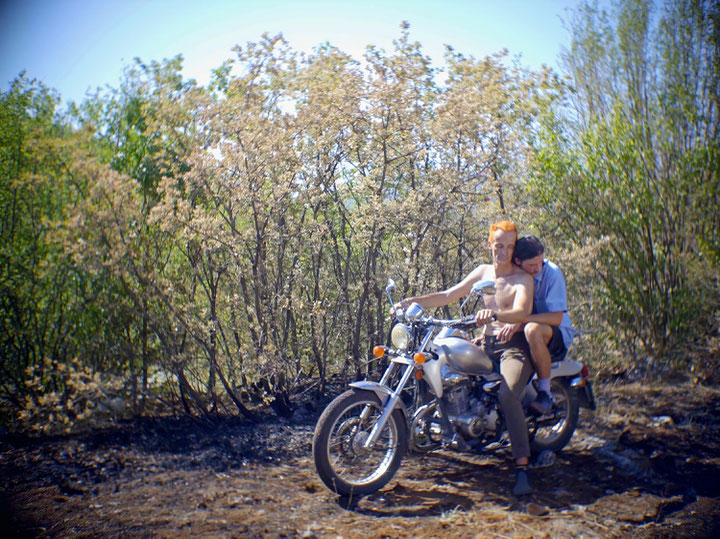The recent advancement in Machine Vision technology has led to a surge in generative algorithmic models that use textual prompts to create images. These algorithmic systems (colloquially AI), are trained to discern patterns within vast pools of information found in dubiously collected data organized under presumptuous categorisations. Operating through apophenia1 Machine Vision models draw meaningful connections between seemingly unrelated elements and thus are able to render novel visual representations from simple textual descriptions. With the slightest shift in the prompt the resulting image can swiftly transition from a photo of a conch shell underwater, into that of an elder flower, then transform into a headless gay porn actor’s torso sunbathing in a desert, only to revert back to a photo of a conch shell.
When reading a novel, one gets to be transported to another world by continuously forming mental images as each sentence unfolds. Objects undergo constant transformation, reshaping from one adjective to another. This imaginative process peaks while reading Samuel R. Delany’s science fiction novel Stars In My Pocket Like Grains of Sand. Delany’s rich language acts as a matrix constantly flickering in its transfiguring formations. Enveloped in a fog of words a reader finds themselves navigating the narrative haze in a permanent state of apophenia. Cliffs, boulders, valleys and rock-plates, whole human and more-than-human worlds change in their mind’s eye like clouds in the sky.
Written in 1984 but set in the distant future world of Velm, Delany’s Starts follows Marq Dyeth, an industrial diplomat overseeing intergalactic technology exchange, and his romantic involvement with Rat Korga, a lone survivor of a destroyed world. In a series of worldmaking procedures the text destabilizes absolute and static notions of identity. For example, the default gender in Stars is female, and the pronouns she/her apply universally, while he/him is used when expressing same-sex attraction. Moreover, Evelmi, the multi-tongued natives of Velm, interact with humans through their primary sense of taste.
Intending to materialize the experience of reading Delany, with the help of fellow artists and friends, I’ve labored a film which takes one of the book’s chapters as a loose dramaturgical template.
The film in a semi-linear structure follows an odd couple as they embark on a journey of ‘dragon hunting’ in the weirdening landscape of the Dalmatian Hinterland. The couple is visibly trans-generational, with the older of the two (played by DISCOllective) taking the lead and establishing himself as a knowledgeable motorcyclist familiar with the terrain. Yet, it is through his companion, the youngish man in a pale blue shirt (Nika Pećarina) that we get to experience- or rather - read the presented landscape.
In the film, our couple bikes through a landscape animated by an algorithm inputting quotes from Delany’s descriptions of Velm into the moving image frame by frame. It is from the rhythms of the resulting erratic and flickery edgeless scenery that the Dragon (Sonja Pregrad) emerges. Delany describes the Velmian dragons as winged creatures moving in complex flying patterns, with advanced eyesight that subjects them to a multitude of afterimages, an inherent effect of their perception.
Dragons and their hunters know: the nerve endings concentrated in the flesh below the joint of wing and body is of the same order as those in the human genitals or the lining of the human ear: the stimulation of rushing air excites them the sensation dying at precisely the rate (...) to make the wings flap enough for lift-off.’ 2
The Dragon’s dance, in the film, is a performance of mimicking the quivering effects of the Machine Vision’s moving image propelled by the dancer’s own pleasure in movement. Translated into a dance score, the Dragon contains the ongoing transformation principle within her body. Continuing the chain: from text into image into movement into dance.
‘I was a dragon …’ he said, voiceless enough for a whisper. ‘I was a dragon? … I was a dragon! It was as if, for a moment, for a year, I was a dragon myself. I didn’t stop standing here, but I …’
‘The radar-bow hooks on to a pretty complete mapping of the dragon’s cerebral responses and, after a lot of translation, plays it back on your own cerebral surface.’
‘… I couldn’t tell how — how long I was a dragon. But I was!’3
Exchanging the piercing association of an arrow for the announcing sound of the horn, the cybernetic crossbow from the original text became a more low-tech instrument in the film - a conch shell. The conch sounds make up the better part of the film’s soundtrack: looped, chopped, pitched and accompanied by its affiliate - the saxophone (played by Max Franklin). The disorienting spiraling shape of the shell’s hollow body activated by the hunters’ breath becomes the sensuous surface on which the translation of the dragon’s dance plays back, thrusting the traveling pair alongside the newly acquainted Old and Young Hunters (Lana Hosni & Marko GM) into the melding experience of becoming each other, becoming the Dragon, becoming the landscape.
Mirroring his own rich experience of gay cruising in pre-AIDS New York, Delany describes the Dragon Hunt as a ritual in open space where different species sensorially experience being the other. While the dragons are hunted by humans, the Evelmi hunt the human hunters, and after having their days worth, they meet each other to sing songs of this experience. A long tradition on Velm, the Dragon Hunt acts as a technology of peace and friendship among the species. In my artmaking practice I often purposefully confuse the categories of inspiration, contribution and collaboration with that of friendship in order to generate a field of affiliations. In this sense I understand filmmaking too as a technology of friendship and comradery. Dragon Hunt was created as a collaboration between artist friends, Machine Vision algorithms, the landscape and Samuel Delany’s text.
1 Apophenia is the spontaneous perception of connections and meaningfulness of unrelated phenomena. See: https://skepdic.com/apophenia.html
2 Samuel R. Delany, Stars in my Pocket Like Grains of Sand, New York 1984, p. 270.
3 Ibid.




